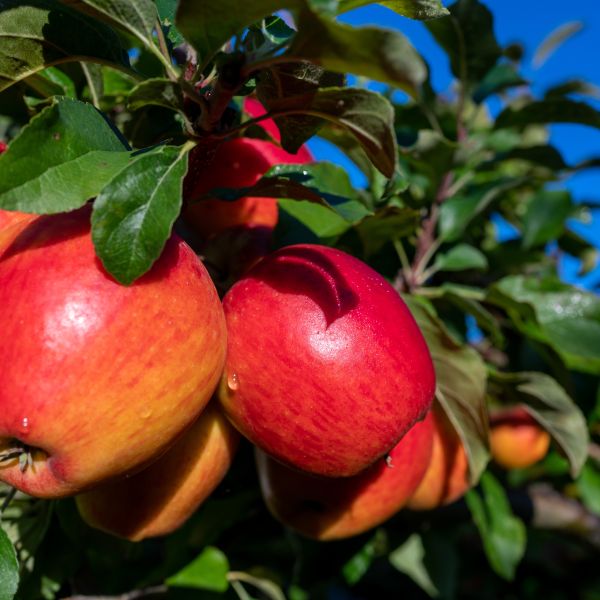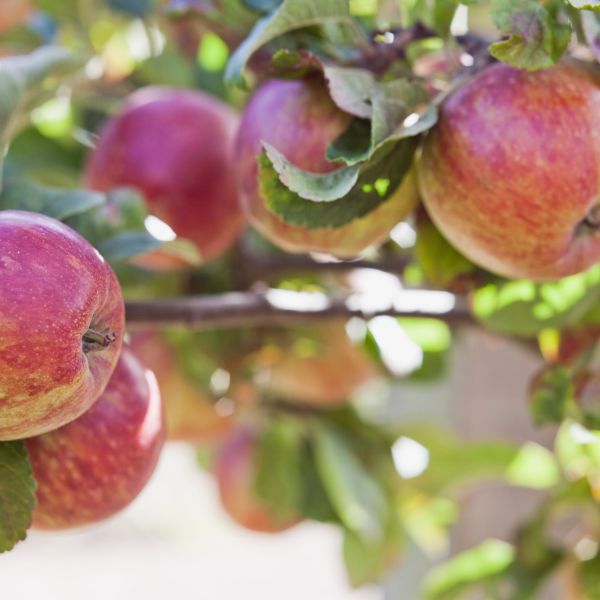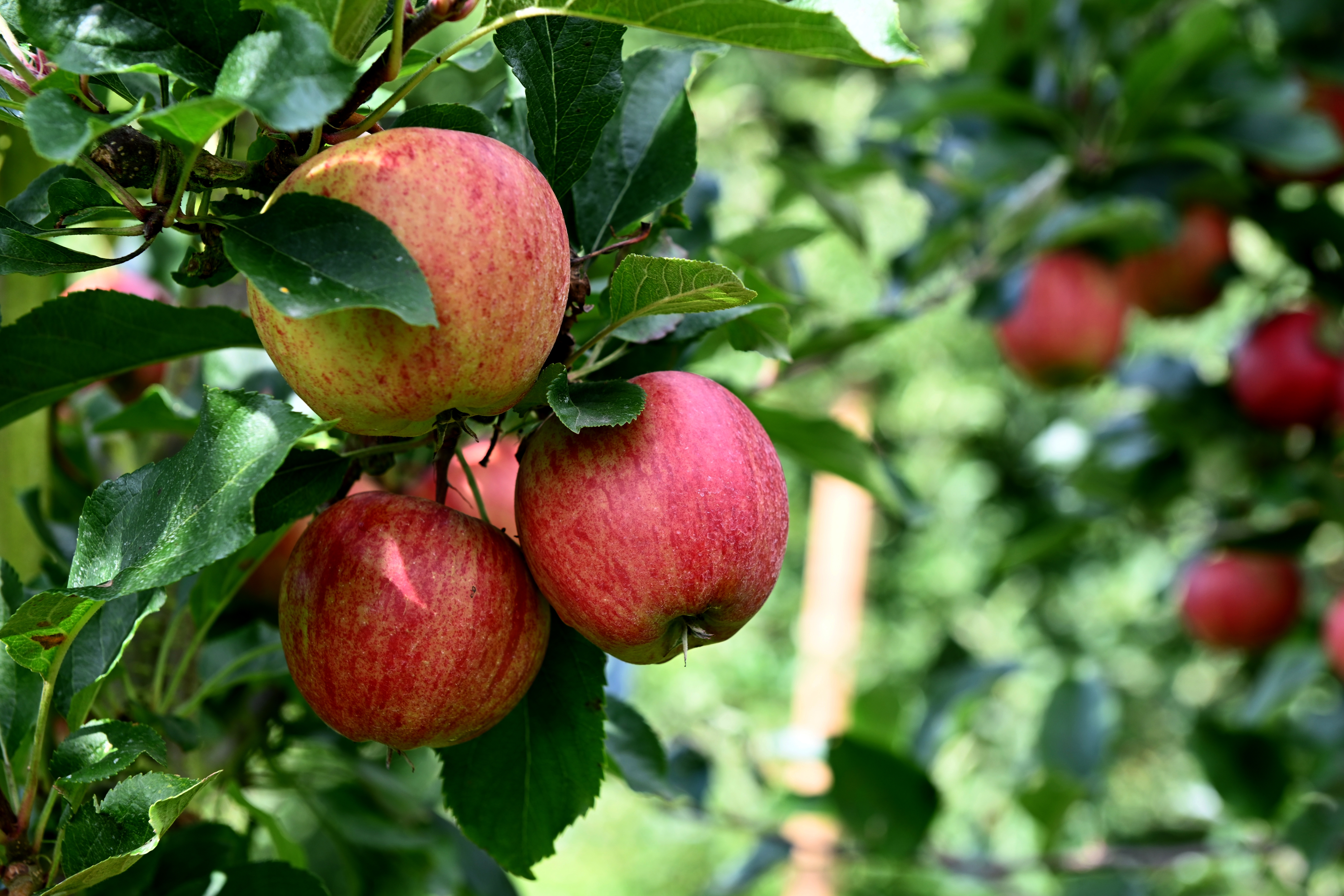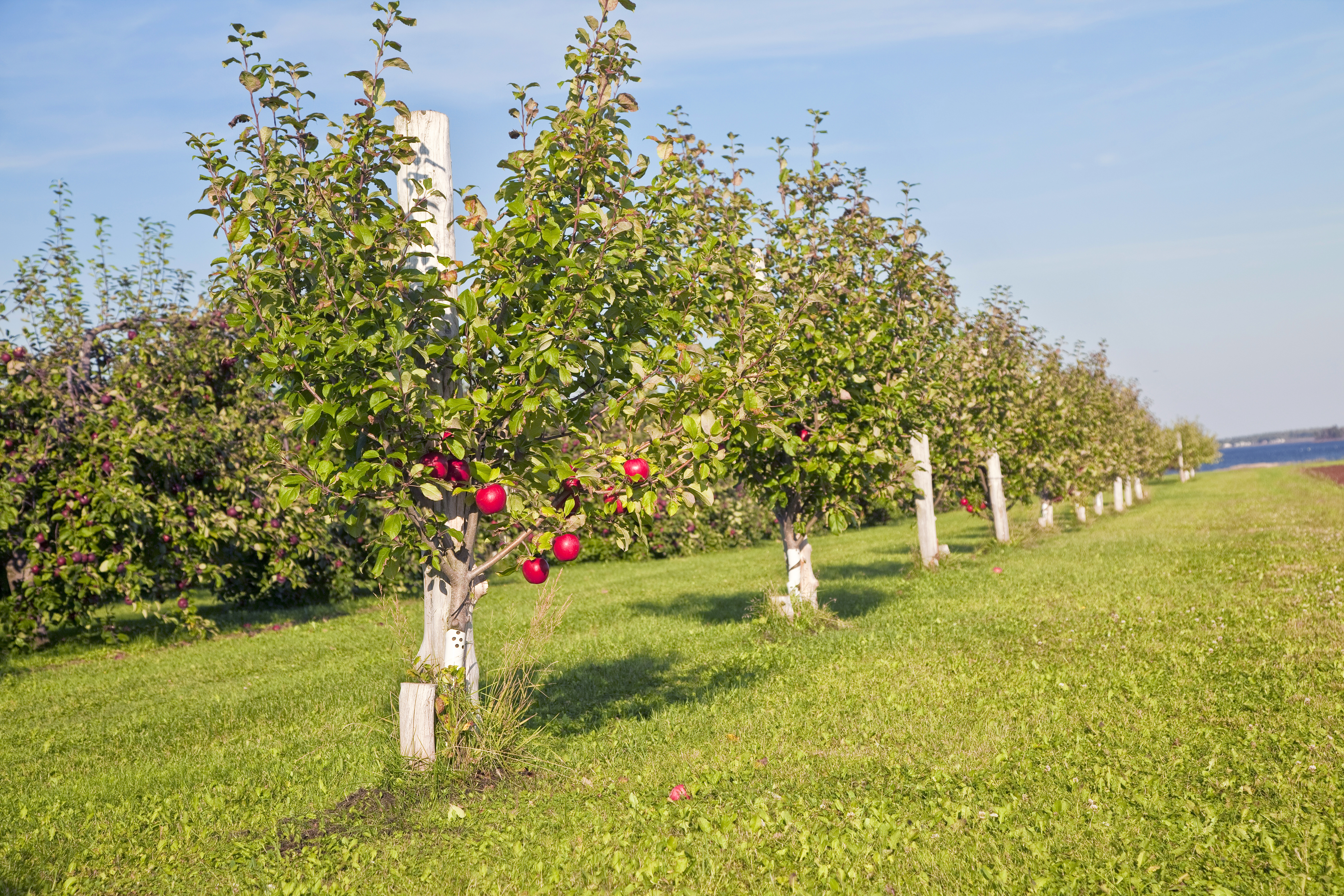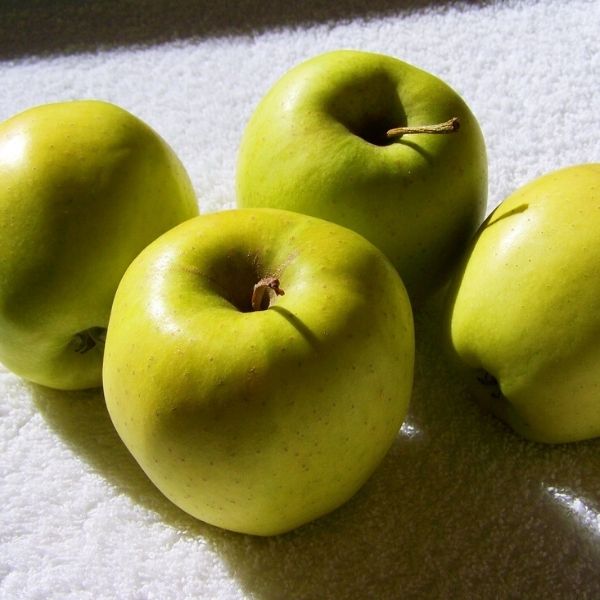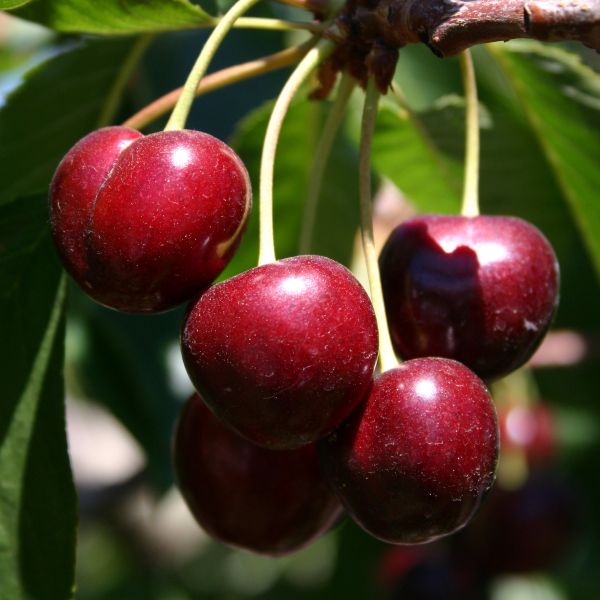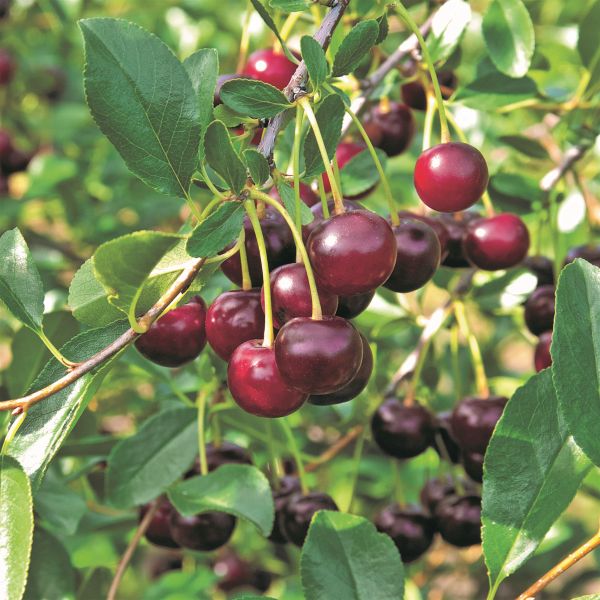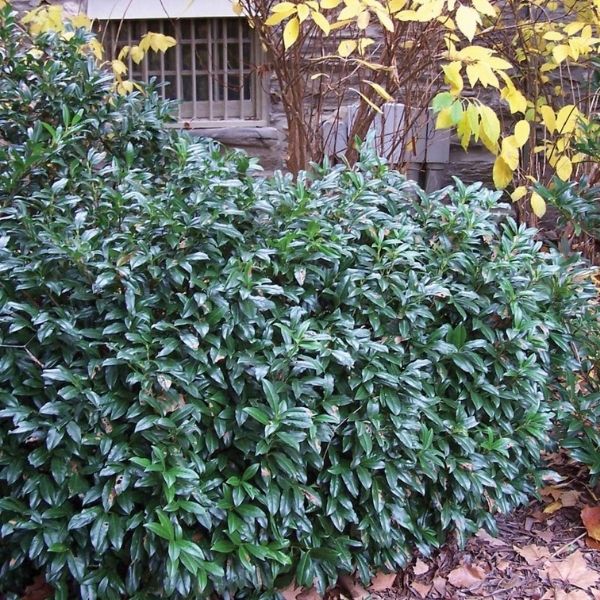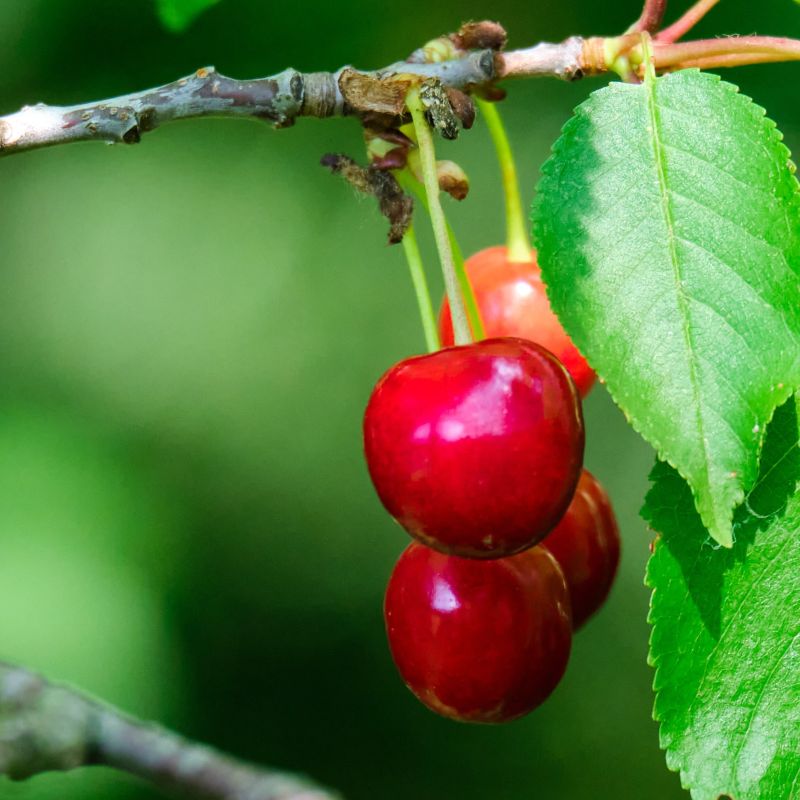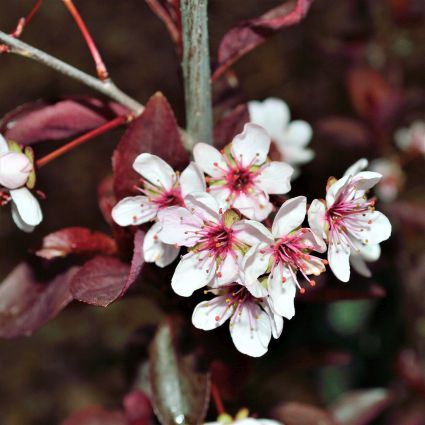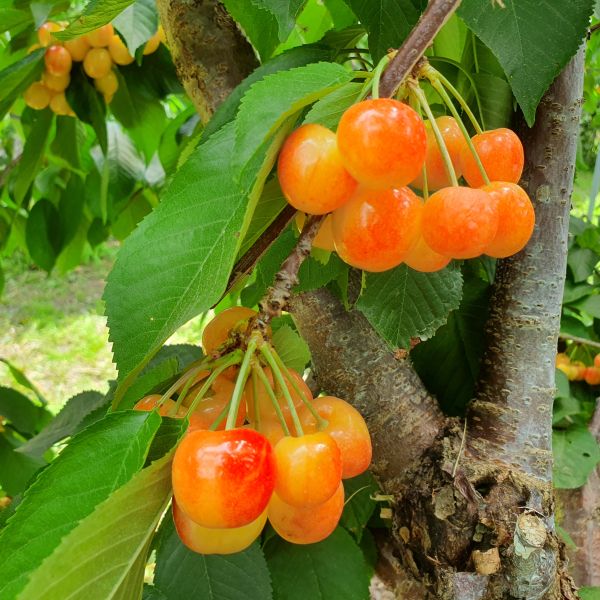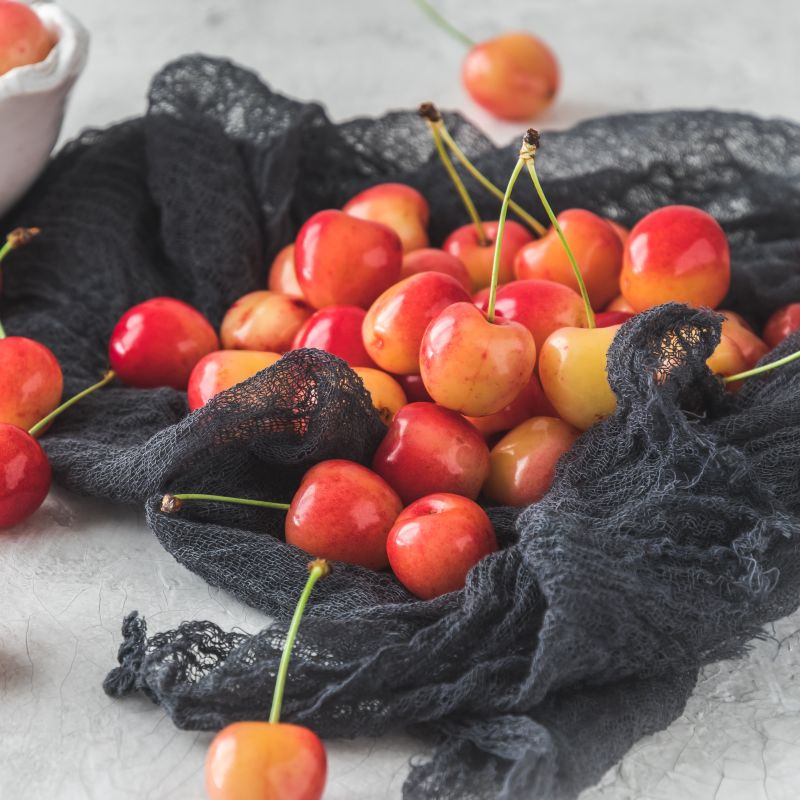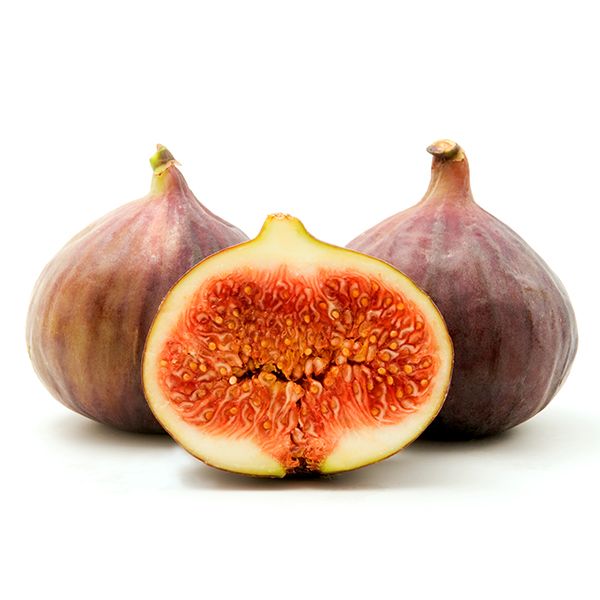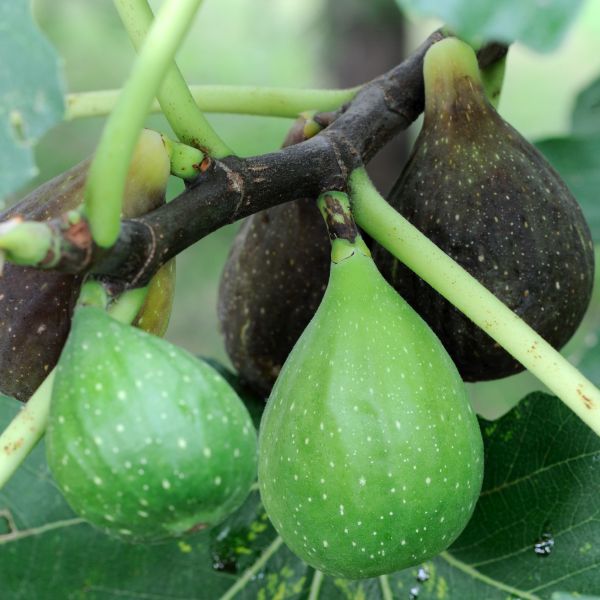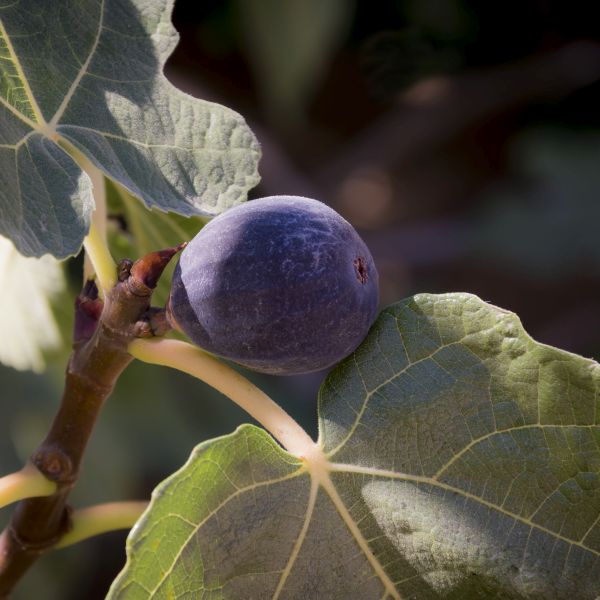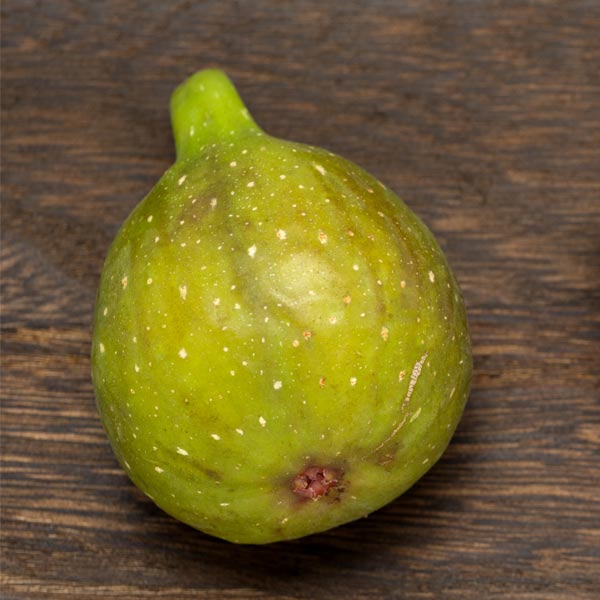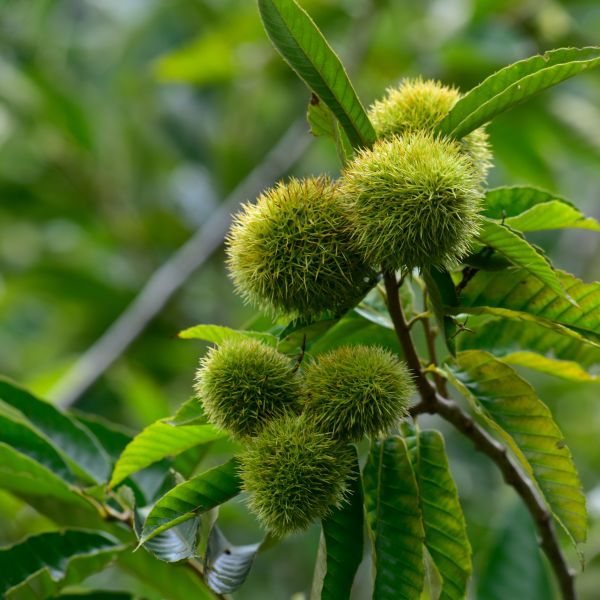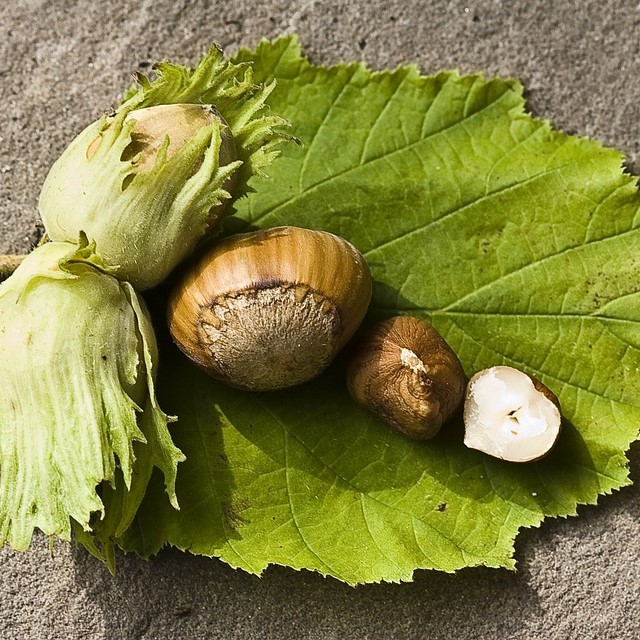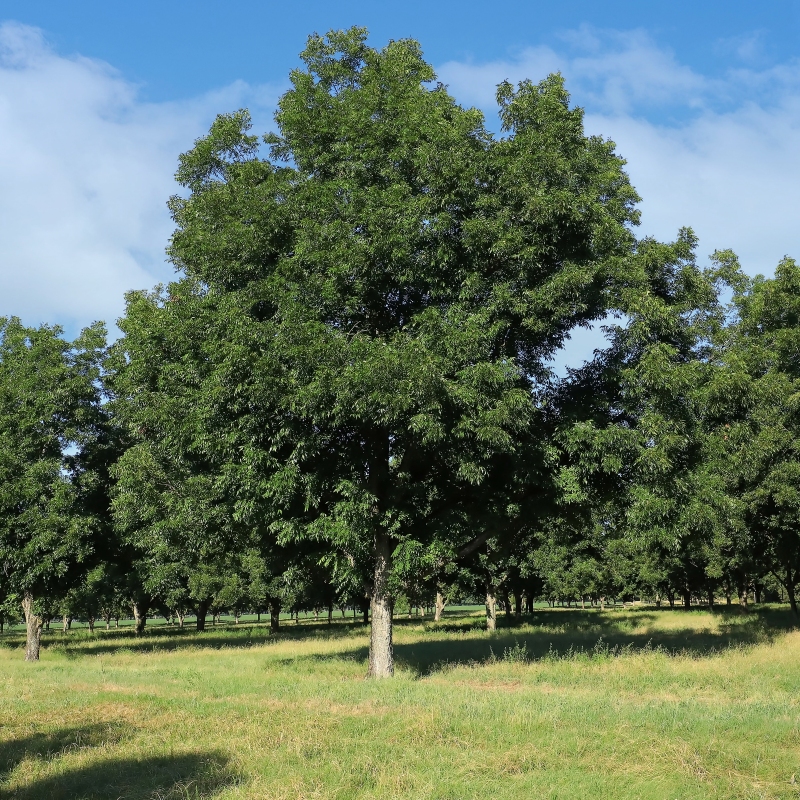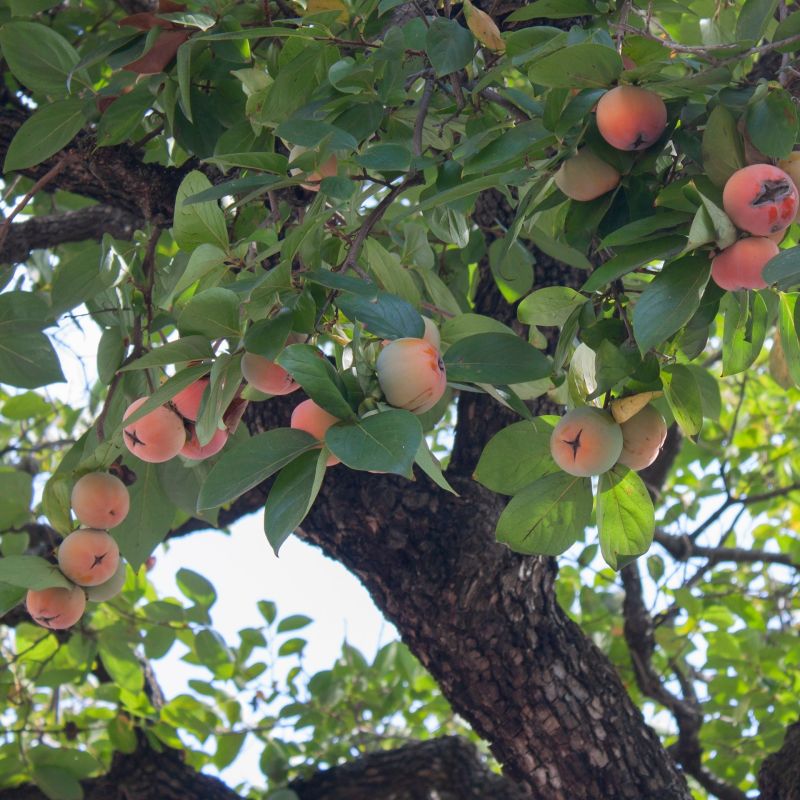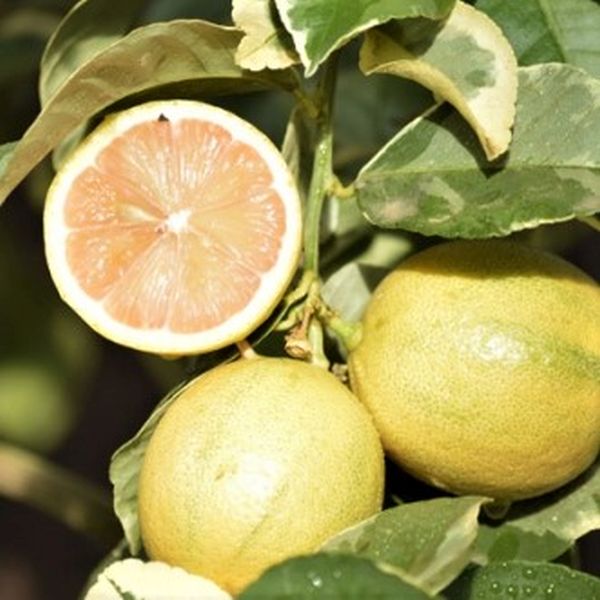
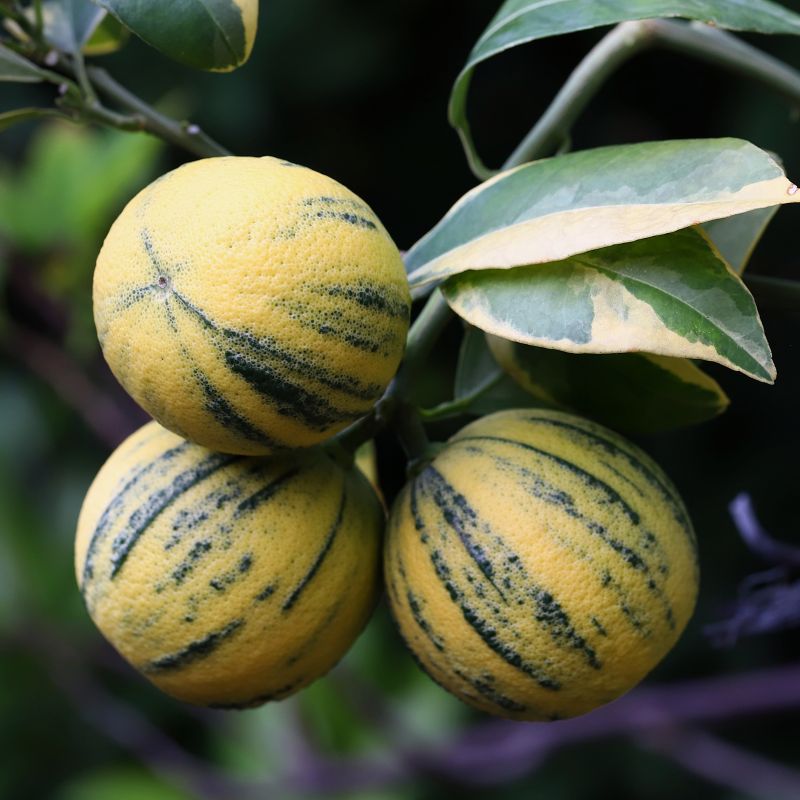
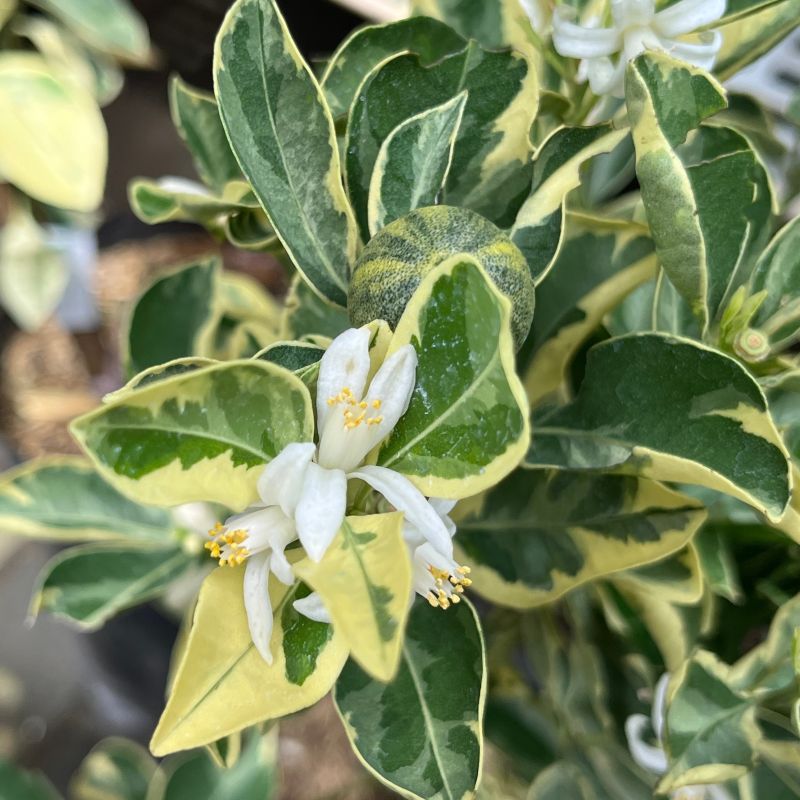
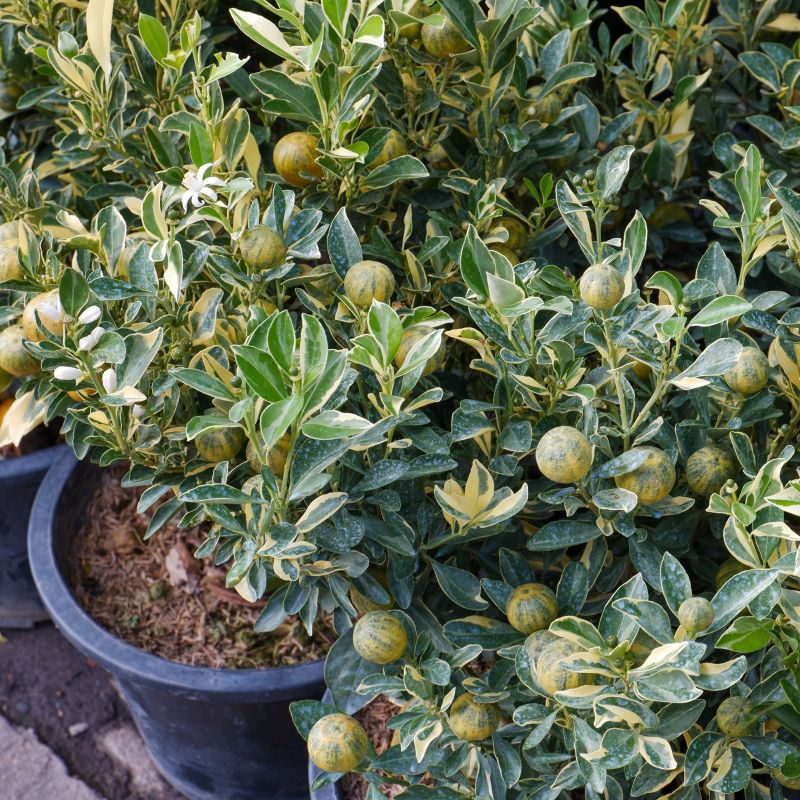
Variegated Pink Lemon Tree
Citrus x limon Burm.f.'Variegated Pink
44 reviews
Variegated Pink Lemon Tree
Citrus x limon Burm.f.'Variegated Pink
44 reviews
- Produces unique variegated pink and green foliage, making it a beautiful and decorative addition to any garden
- Produces pink-striped lemons that add a pop of color to your fruit bowl or lemonade
- Easy to care for and adapts well to various climates
- Recommended by landscape designers for optimal fit in real yards
$128.00
$183.00
30% Off
- Ships to 43215 in 3 to 7 days
- Free Shipping Over $150
- Plant Arrival Guarantee
- In Stock
- Free Plant Consult
$200 - Landscape-Approved: Every Plant We Sell Comes With Design Expertise Behind It
- 4x4x11 Inch Container
- 2.5 Gallon 2-3 Feet
Not just beautiful - intentionally selected by ShrubHub's 3D landscape design team to fit real-world spaces and maximize yard potential.
Why Variegated Pink Lemon Tree?
Variegated Pink Lemon Tree is a unique variety of lemon tree with variegated foliage and pink-tinged fruit that adds a splash of color to any garden. Known for its tart and juicy fruit, the tree is easy to grow and low maintenance. It is a popular choice among citrus enthusiasts, and prized for its ornamental value, making it a must-have for any garden or orchard.
People who loved this plant also bought
Sunlight
The Variegated Pink Lemon Tree requires full sunlight for optimal growth and fruit production.
Watering
Variegated Pink Lemon Trees have a moderate watering requirement. They prefer consistently moist, but not waterlogged, soil. Watering once or twice a week, allowing the top inch of soil to dry out between waterings, is generally sufficient to meet their ne
Fertilizing
Variegated Pink Lemon Trees generally have the same fertilizer requirements as regular lemon trees. They thrive with a balanced citrus fertilizer that is high in nitrogen, phosphorus, and potassium. Consult a local nursery or expert for specific recommenda
The Variegated Pink Lemon Tree, also known as the variegated Pink Eureka Lemon tree or pink-fleshed Eureka lemon, is a lemon tree cultivar distinguished among lemon and citrus trees by the remarkable pink flesh of its lemons.
While the pink variegated lemon isn't so different as to give you pink lemonade (its juice is clear) and generally tastes like other eureka lemons, as they age, pink lemons taste less acidic than what you'd expect from other lemons. Generally, variegated lemons are much milder than other eureka lemons with a tart taste.
Variegated pink lemon trees are evergreen and bloom with white flowers almost all year alongside pink flower buds. The foliage of variegated lemon trees is also variegated, with dark green leaves variegated with creamy white.
The variegated eureka lemon is a yellow-striped green from the outside, giving the whole tree a unique appearance.
The variegated lemon tree can be planted in USDA growing zones 8-11. If mild winters aren't factored in where you live, your pink eureka trees can be grown indoors.
Otherwise, variegated eureka lemon trees should be planted in full sunlight to partial sun in well-drained soil. Water regularly until established.
Order your Variegated pink lemon tree from Shrubhub right away to enjoy the lovely lemons and this beautiful tree.
Plant Information:
| Botanical Name: | Citrus x limon Burm.f.'Variegated Pink |
| USDA Zones: | 9 - 11 |
| Water: | Moderate to Low Moisture |
| Exposure: | Full Sun |
| Soil Needs: | Well-Drained |
| Mature Height: | 15 - 18 feet |
| Mature Spread: | 4 - 5 feet |

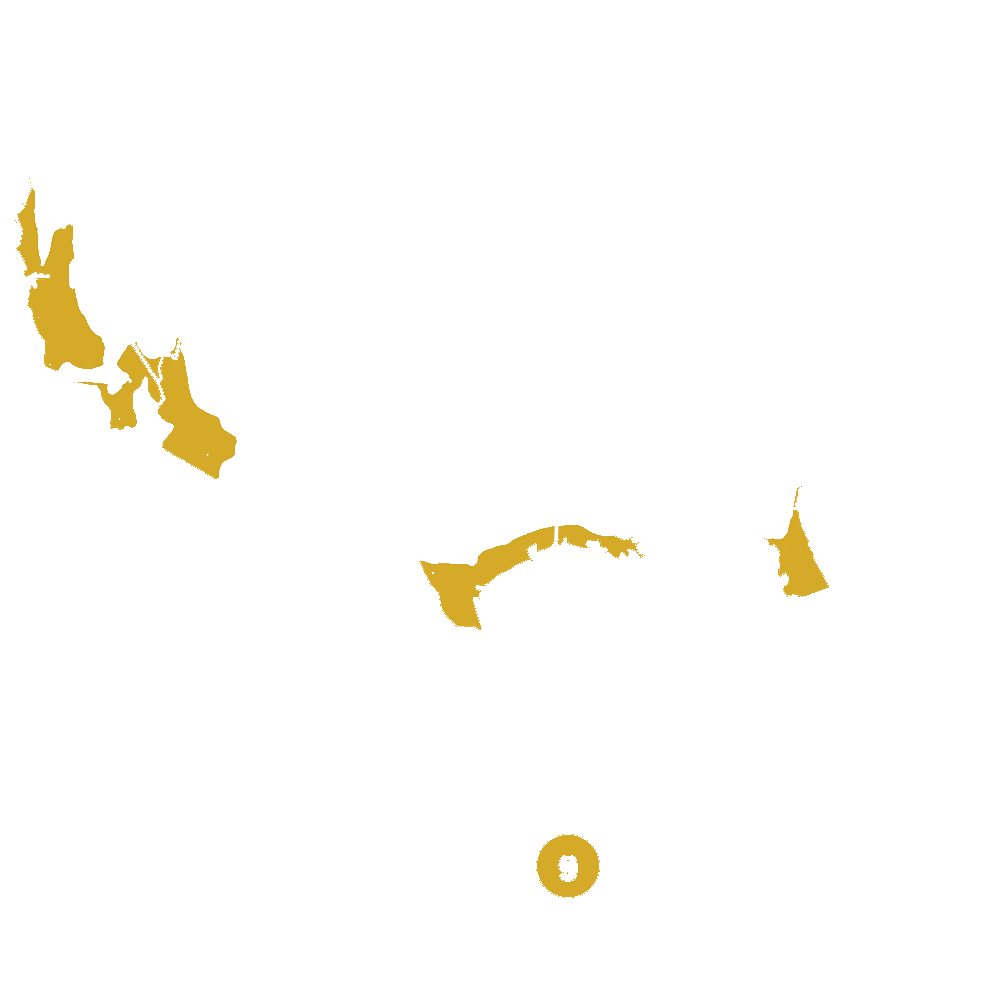
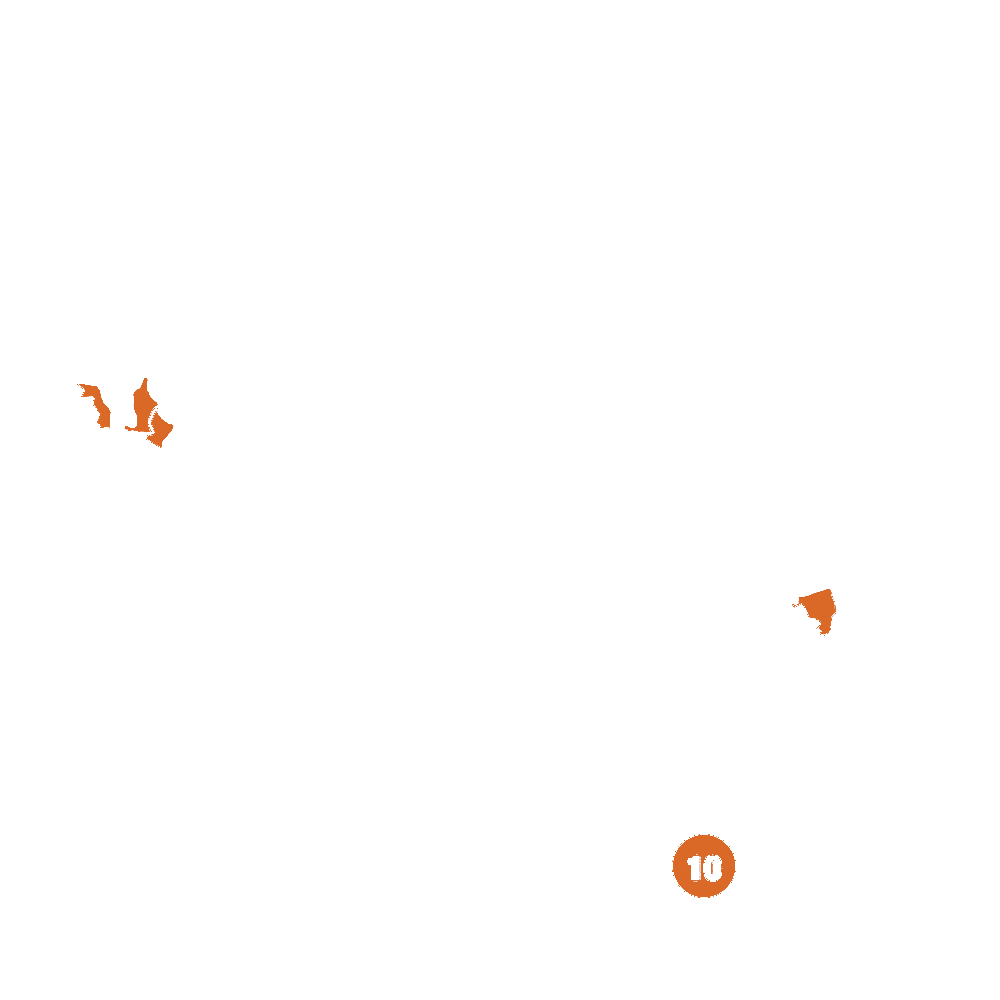
Pollination Info
Pollination Information for Variegated Pink Lemon Tree (Citrus x limon Burm.f.'Variegated Pink')
The Variegated Pink Lemon Tree is a hybrid citrus tree that requires cross-pollination between different citrus varieties in order to produce fruit. The tree is self-infertile, meaning it cannot pollinate itself, and relies on bees or other pollinators to transfer pollen between flowers.
Ideally, planting at least two or more different citrus varieties close to each other can help increase the chances of successful cross-pollination. Some compatible varieties for the Variegated Pink Lemon tree include:
- Valencia Orange
- Meyer Lemon
- Bearss Lime
- Pink Grapefruit
- Finger Lime
It is important to note that other citrus varieties may also be compatible and help with cross-pollination. Be sure to research and choose varieties that will bloom around the same time as the Variegated Pink Lemon tree, in order to maximize the chances of successful pollination.
It is also important to provide a suitable habitat for pollinators, such as planting nectar-rich flowers nearby or providing nesting sites for bees.
FAQ
Frequently Asked Questions for Variegated Pink Lemon Tree
Q: What is a Variegated Pink Lemon Tree?
A: The Variegated Pink Lemon Tree, also known as Citrus x limon Burm.f.'Variegated Pink', is a citrus tree that produces pink-fleshed lemons and has variegated leaves with green, white, and yellow stripes.
Q: Where does the Variegated Pink Lemon Tree come from?
A: The origin of the Variegated Pink Lemon Tree is not entirely clear, but it is believed to have been a chance mutation of the normal Eureka lemon cultivar in California in the mid-20th century.
Q: How tall does the Variegated Pink Lemon Tree grow?
A: The Variegated Pink Lemon Tree can grow up to 10-15 feet tall in ideal conditions.
Q: What type of climate does the Variegated Pink Lemon Tree prefer?
A: The Variegated Pink Lemon Tree thrives in warm and sunny climates with moderate temperatures and low humidity. It is best grown in USDA zones 9-11.
Q: How do you care for a Variegated Pink Lemon Tree?
A: The Variegated Pink Lemon Tree requires regular watering and fertilization, and it should be pruned to maintain its shape and promote healthy growth. It also needs protection from frost and freezing temperatures.
Q: When does the Variegated Pink Lemon Tree produce fruit?
A: The Variegated Pink Lemon Tree can produce fruit year-round in warm climates, but its main fruiting season is in the winter and spring.
Q: What are the benefits of the Variegated Pink Lemon Tree?
A: The Variegated Pink Lemon Tree produces unique and attractive pink-fleshed lemons that have a slightly sweeter and less acidic taste than regular lemons. Its variegated leaves also make it a popular ornamental tree for gardens and landscapes.
Q: Can the Variegated Pink Lemon Tree be grown in a container?
A: Yes, the Variegated Pink Lemon Tree can be grown in a container as long as it is provided with adequate space, soil, and nutrients. It may need to be repotted every few years.
Q: Where can I buy a Variegated Pink Lemon Tree?
A: Variegated Pink Lemon Trees can be purchased from nurseries, garden centers, and online retailers that specialize in citrus trees. It may also be possible to find them through local classified ads or gardening groups.
Q: How do I extract juice from a Variegated Pink Lemon?
A: To extract juice from a Variegated Pink Lemon, slice it in half and squeeze the juice through a citrus juicer or by hand. The pink color of the juice may vary depending on the ripeness of the fruit.
Planting & Care
Planting & Care for Variegated Pink Lemon Tree (Citrus x limon Burm.f.'Variegated Pink')
If you're planting a Variegated Pink Lemon Tree, here's what you need to know:
Location:
Choose a location that receives full sun or partial shade. The tree can tolerate some shade, but it will produce fewer fruits in the shade.
Make sure it is planted in well-draining soil. If your soil is heavy clay or sandy, amend it with organic matter like compost, peat moss, or coconut coir, which will improve soil texture, drainage, and fertility.
Planting:
Plant your tree in the spring or fall, when the temperatures are mild and the soil is workable. Dig a planting hole that is twice as wide as the root ball and as deep as the root ball. Carefully remove the tree from its container and gently loosen the roots. Place the tree in the hole so that the top of the root ball is level with the soil surface. Backfill the hole with soil, pressing it gently to eliminate air pockets. Water the tree thoroughly to settle the soil. Mulch the area around the tree with a layer of organic matter, which will help retain moisture and suppress weeds.
Watering:
Keep the soil moist but not waterlogged. Check the soil moisture by sticking your finger in the soil up to the first joint. If it feels dry, it's time to water. When you water, give the tree a deep soak, allowing the water to penetrate the soil to the depth of the roots. Avoid watering the tree from overhead, as this can promote fungal diseases. Instead, water at the base of the tree, using a drip irrigation system, a soaker hose, or a watering can.
Fertilizing:
Fertilize the Variegated Pink Lemon Tree three times a year: in early spring, late spring, and mid-summer. Use a balanced fertilizer with an NPK ratio of 10-10-10 or 15-15-15. Follow the instructions on the package and apply the fertilizer evenly to the soil around the tree. Don't fertilize late in the season, as this can stimulate new growth that won't have enough time to harden off before winter.
Pruning:
Prune the tree in late winter or early spring, before the new growth starts. Remove any dead, diseased, or damaged branches, as well as any water sprouts or suckers that grow from the base of the tree. Thin out the interior branches to promote air circulation and light penetration, which will improve fruit production and reduce the risk of fungal diseases. Don't remove more than one-third of the tree's canopy in a single year.
Pests & Diseases:
The Variegated Pink Lemon Tree can be affected by various pests and diseases, such as citrus leaf miner, aphids, spider mites, scale insects, mealybugs, citrus canker, and citrus greening. To prevent and control these problems, keep the tree healthy by following good cultural practices like proper watering, fertilizing, and pruning. If you notice any signs of pests or diseases, take action promptly by using organic or chemical remedies, depending on your preferences and the severity of the problem.
With proper planting and care, your Variegated Pink Lemon Tree can produce delicious and attractive fruits that will enhance your garden and your culinary adventures.
Check Out These Verified Customer Reviews:
Customer Reviews
4.7 out of 5 based on 44 reviews
Thank you! Your review has been submitted.
I love the unique color combination of the Variegated Pink Lemon Tree.
I absolutely love my Variegated Pink Lemon Tree! The tree arrived in great condition and is thriving in my garden. The website was easy to navigate and the shipment was fast. Excellent customer service as well.
The shipment was quick and the tree was well-packaged to prevent any damage.
Item has been added to your cart.



